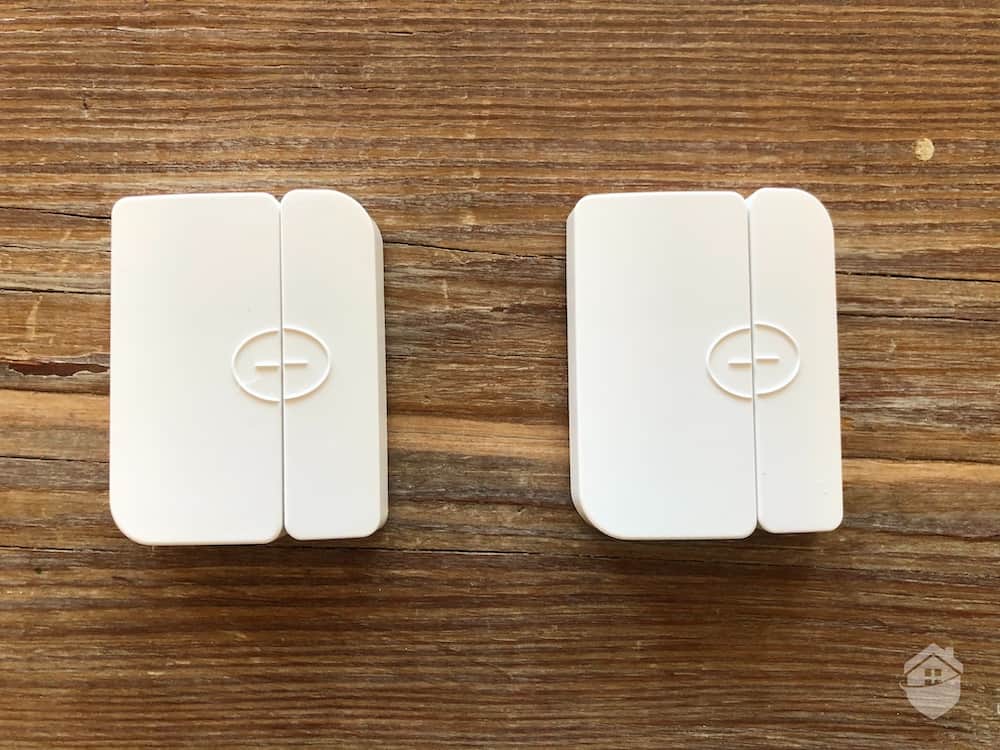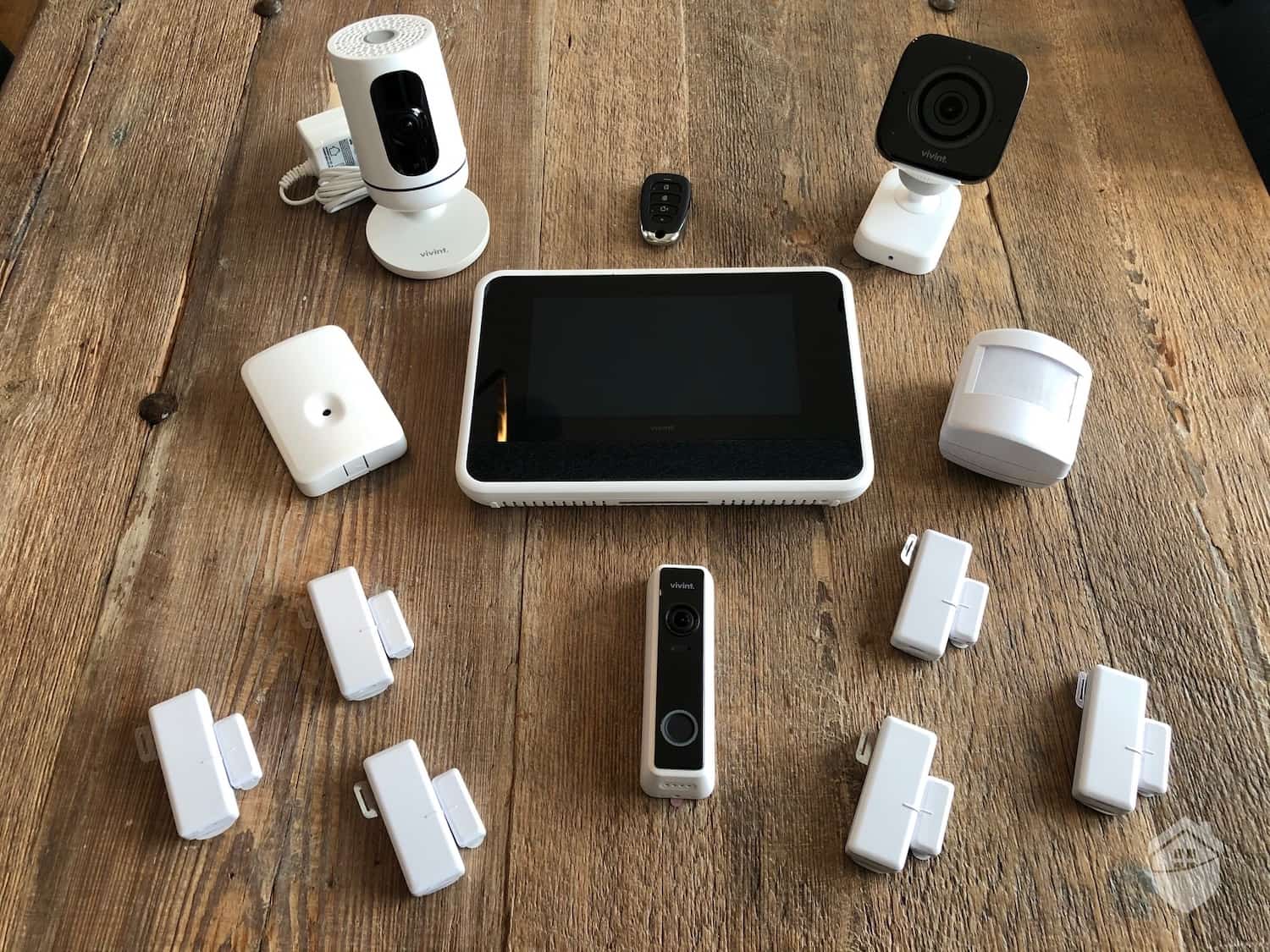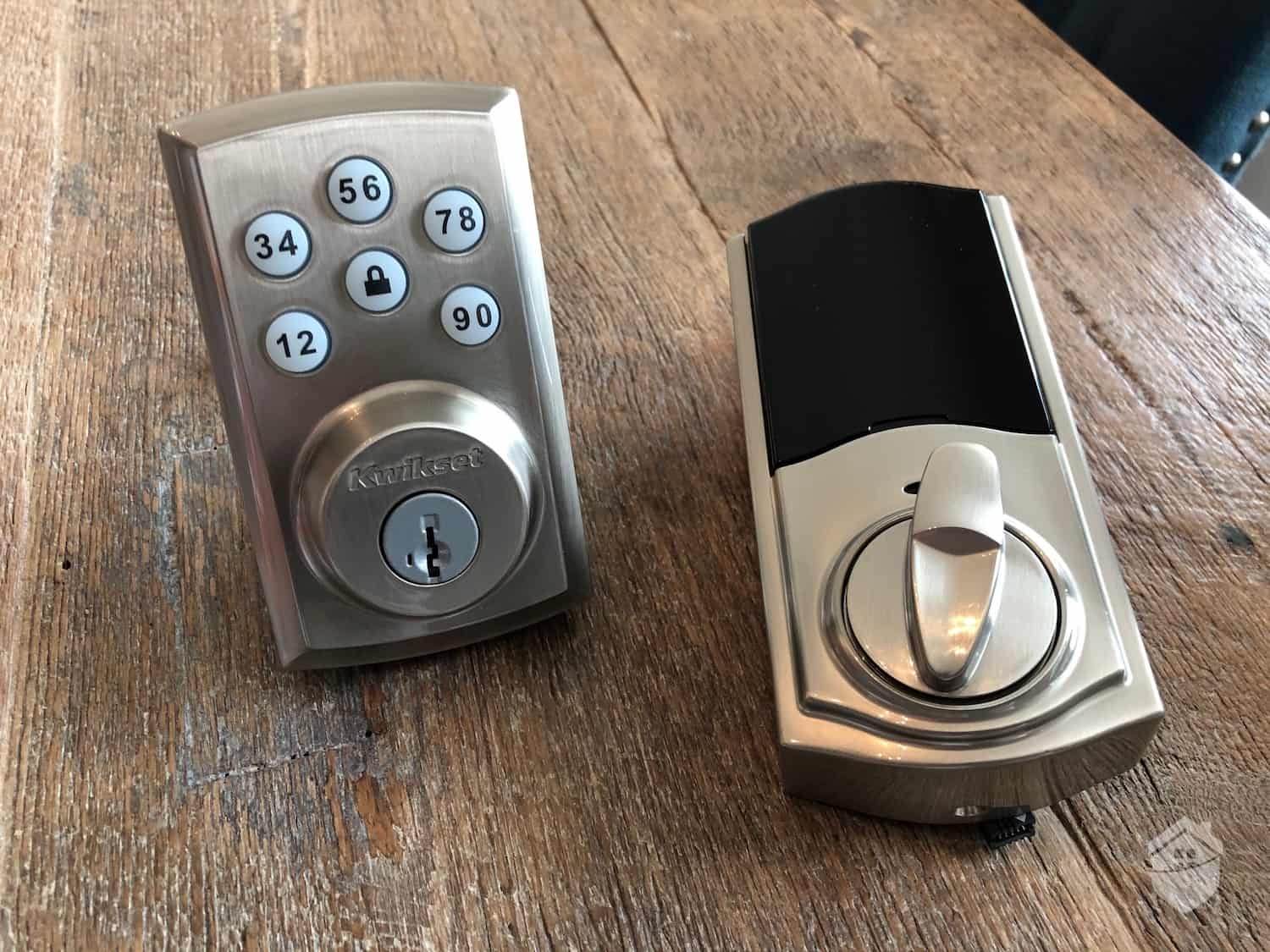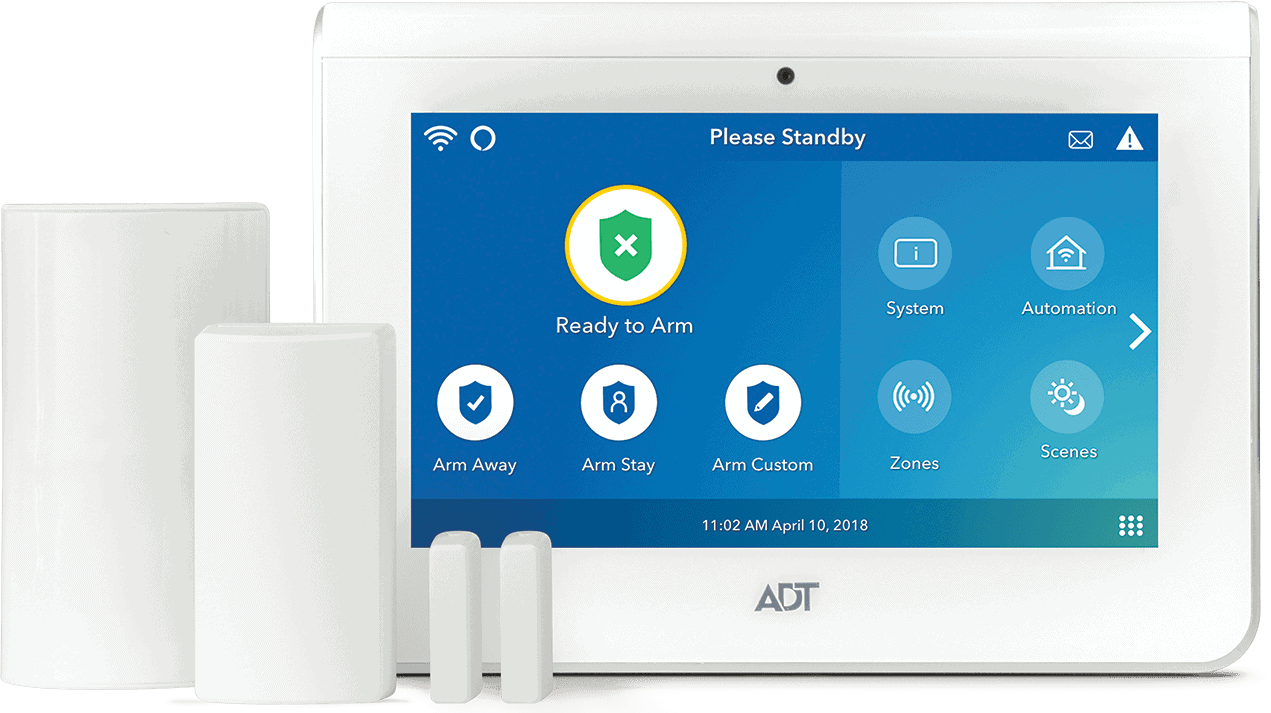Think of it. It’s late at night, you’re getting ready for bed. You hear something a little weird outside, but shrug it off. Suddenly, your door opens and an alarm screams. You look out the window to see a figure sprinting across your lawn into the dead of night.
It’s a scary scenario, for sure, but imagine what the alternative could have been. You might have just been saved by one of the most simple yet effective tools in the home security arsenal — the door alarm sensor.
One of the fundamental principles of any security system is that it’ll alert you, and potentially the authorities, to an intruder’s presence. But how exactly do door sensors work, where should they be installed, and how much do they cost? We’ll get into all of that, but let’s start by understanding what they are and how they function.
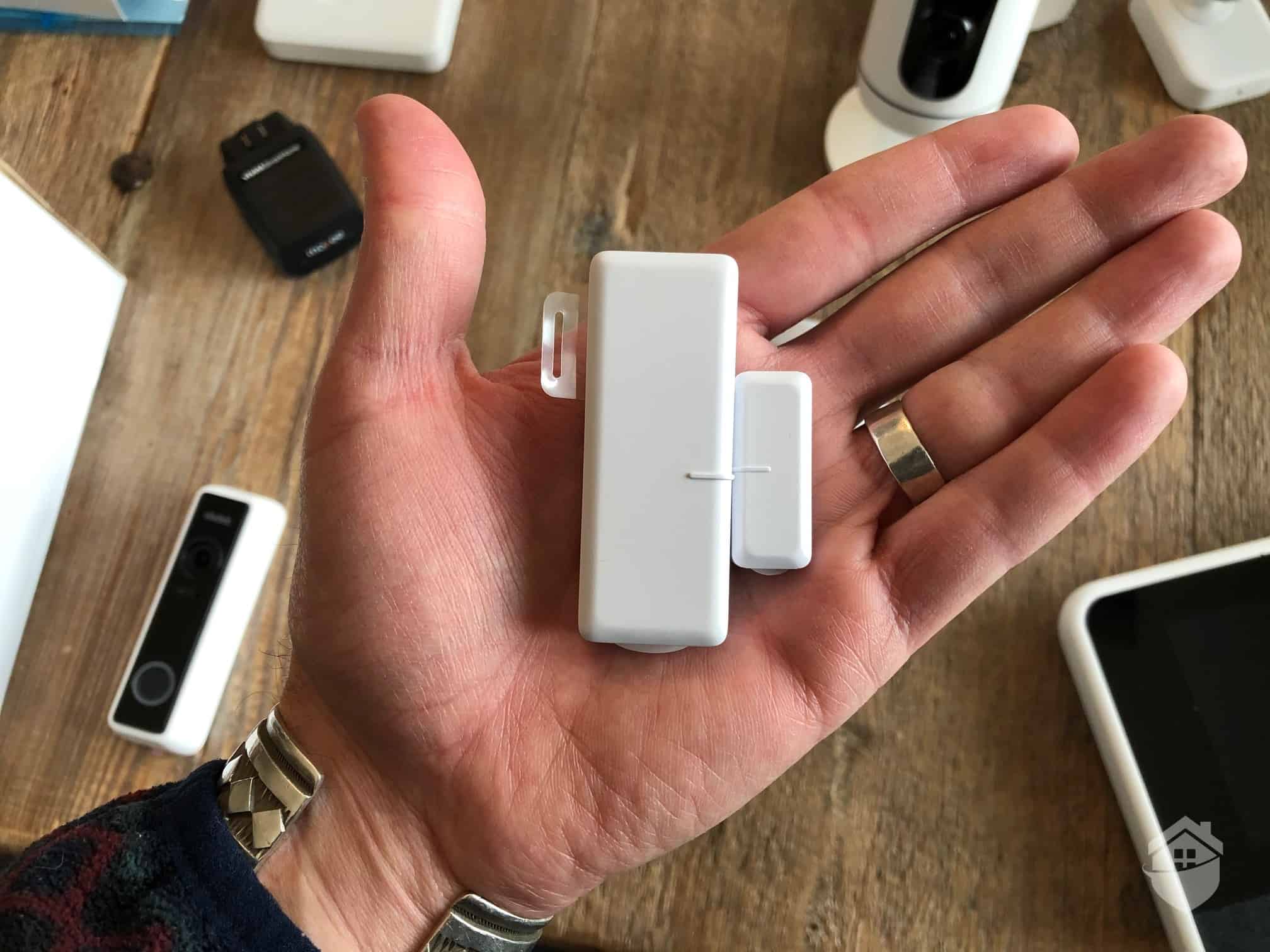
Vivint Door and Window Sensor
How Does a Door Alarm Sensor Work?
There are a wide variety of door alarm sensors on the market, from the simple to the complex. For the most part, though, they all work on the same principle.
Most door alarms use a type of contact sensor that relies on what’s called a reed switch and a magnet. When the door is closed, the magnet keeps that reed switch circuit closed. When the door is opened and the magnet is removed, the circuit opens, triggering an alarm or an alert. It’s pretty simple stuff; its prototype was actually invented back in 1918. You can read more about that in our history of home security.
FYI: The first door alarm sensor relied on electromagnetism to trigger a loud hammer-and-bell alarm when it was armed. This type of alarm system evolved into the modern door alarm sensors we know today.
Now that you understand how door sensors work, let’s take a look at the varieties they come in.
What Are the Types of Door Alarm Sensors?
There are two main distinctions that differentiate door alarm sensors: wired versus wireless, and surface-mounted versus recessed. Let’s define both.
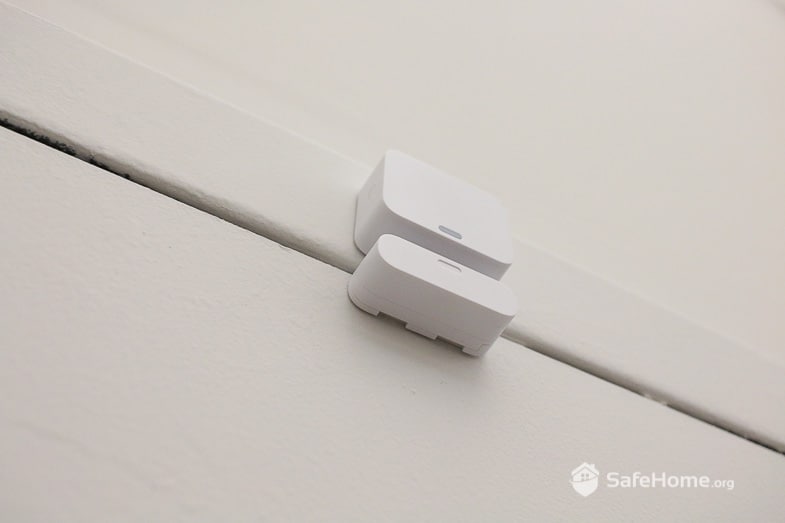
SimpliSafe – Door/Window Sensor
Wired door alarm sensors, obviously, are powered by your home’s electricity, and wireless sensors use battery power. Surface-mounted sensors will attach to the outside of your door and door frame, while recessed sensors will be drilled into the inside of the door frame and door.
Pro Tip: Want to better understand the types of sensors you can install in your home? Check out our guide to Vivint’s sensors – they’re one of our favorite manufacturers.
Which is better? Functionality-wise, they’re all pretty much the same. Aesthetically speaking, though, you won’t even notice wireless recessed sensors, while surface-mounted sensors can be a little obtrusive. But 90 percent of home security systems come with wireless, surface-mounted sensors, also called contact sensors.
How Do You Install a Door Alarm Sensor?
Most door alarm sensors are very easy to install. The sensor itself is mounted on the door itself, while the smaller magnetic portion is installed on the door frame in line with the sensor.
Most of the time, you’ll have to use the included hardware to screw the sensors into the frame and the door; however, many models use adhesive tape that makes it easy to “peel-and-stick” to the surfaces.

Back of Cove Door/Window Sensor
On the one hand, peel-and-stick mounting is nice if you’re worried about putting permanent holes in your wood. On the other hand, it can be frustrating if that adhesive becomes less sticky over time and your sensor falls off at three in the morning (a blaring siren makes for a rude awakening). Thankfully, in all our years of testing home security systems, we’ve only had that happen once.
And like we said above, for recessed sensors you’ll have to route out a space in the door frame for the sensor and bore a hole into the door for the magnet — or vice versa depending on the model you go with. Either way, unless carpentry is a hobby of yours, you’ll likely won’t have the right tools for the job just laying around. Trust us, you don’t want to start attacking your door frame with a hammer and screwdriver. It never ends well.
So now that you understand the mechanics of how a door alarm sensor works and how to install them, let’s take a look at some of their uses.
What Are Door Alarm Sensors Used For?
Most obviously, door alarm sensors are used to alert you when a door is open. Most people rely on them to help prevent burglaries or home invasions, but they do have other uses as well.
For starters — as long as it’s not set up to alert authorities or trigger a piercing alarm — your door alarm sensor can be used as a doorbell. Want to know when your husband comes home with dinner or if more guests arrive at your party? Set up your door alarm sensor to send an alert to your phone.
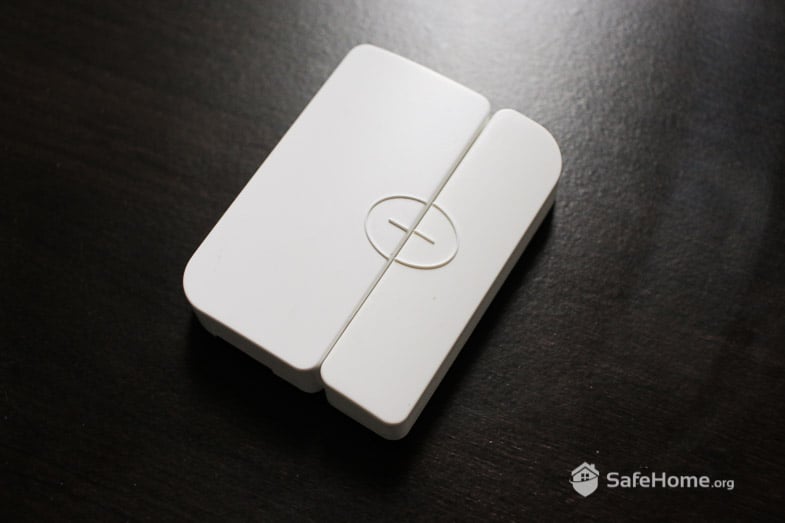
Alder Door/Window Sensor
You can also use door alarm sensors to keep your kids out of trouble. Is your middle schooler not supposed to use the game room until their homework is done or are you worried your teen might sneak into the liquor cabinet while you’re away? A door sensor that triggers an alert can keep everyone honest.
So now that you understand how they work, how they’re installed, and what they can be used for, let’s take a look at that all-important question … how much are you going to have to pay for door alarm sensors?
What Is the Price Range for Door Alarms?
The short answer is that it really depends. Some door alarm sensors can be bought as stand-alone products, sometimes they’re sold as a package deal, and other times they’re part of a comprehensive home security system kit like we saw in our ADT review.
Pro Tip: If you’re looking for a specific type of door alarm sensor to protect multiple entryways, make sure to check and see if the manufacturer sells them in multi-packs. Nine times out of 10 buying in bulk will save you some cash, and that’s true of door alarm sensors, too.
With that in mind, if you’re looking to equip your home with door alarm sensors, expect to pay somewhere between $10 and $200. And that’s assuming you’re just buying sensors and installing them yourself. If you’re buying a kit or you want professional home monitoring, the price is going to go up. For more information, check out our guide to how much home security systems cost.
FYI: SafeHome is now livestreaming! Got questions about home security? Email us at info@safehome.org, and we’ll answer your questions live on our next stream—personalized advice, straight from the experts. Find us on YouTube @safehome_org. Don’t miss out!
SafeHome’s Latest Livestream
Our home security experts are now doing livestreams with industry experts like retired SWAT Commander Gene Petrino. Learn how to protect your home and family from thieves, burglars, and home invaders.

Final Thoughts on Door Alarm Sensors
Similar to motion sensor lights, door alarm sensors alone likely aren’t enough to protect you from hardened criminals. For that, you’ll likely need a multi-dimensional home security system that might include other, more high-tech elements.
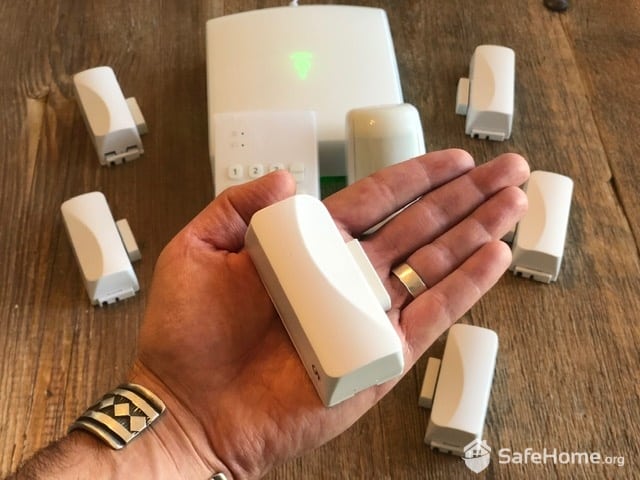
Frontpoint Door Sensor
That said, purchasing a home security system can be a daunting prospect. That’s why we’ve put together this home security system buyers guide to help put all the information you need to know in one place. There you’ll find answers about sensors, monitors, alarms, smart home integration, and more.
Door Alarm Sensors FAQs
- How do door alarm sensors work?
Most door alarms use contact sensors that work with reed switches and magnets. The magnet holds the switch closed, completing a circuit. When the magnet moves, the circuit is broken, sounding an alarm or triggering an alert.
- How much do door alarm sensors cost?
While every application is different, most customers spend between $10 and $200 to outfit their homes with door alarm sensors.
- Do I need door alarm sensors?
Door alarms are the backbone of any functional home security system. If you want to keep folks out or know when they come in, door alarm sensors are essential.
- Can I buy hidden door alarm sensors?
A lot of door alarm sensors are surface-mounted, which some people find a little unsightly. If you don’t want big plastic rectangles on all your doors, invest in recessed sensors. They’re more difficult to install, but they’re tough to beat aesthetically speaking.
- Are door alarm sensors hard to install?
Most surface-mounted door alarm sensors are extremely easy to install and come with mounting hardware or adhesive backing. If you’re installing recessed sensors, you’ll either need specialized tools or the help of a handyman.


